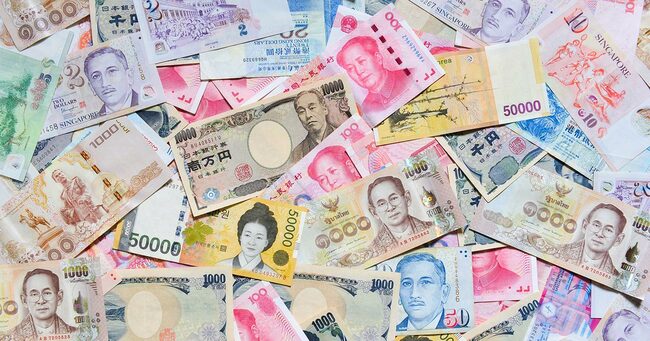Originally published in Japanese on Nov. 23, 2022
Different times, same fears
Today’s U.S. dollar rise stems partly from America’s high interest rates — tied to Federal Reserve rate hike hysteria — and partly investors seeking safety amid 2022’s myriad fears. Bears say Asian central banks are stuck between matching U.S. tightening or watching their currencies plunge. Some fret a redux of 1997. But as one may recall, that crisis was not just about weak currencies. Many countries in the neighborhood tried to defend strict currency pegs despite lacking reserves.
The strict pegs so common then across East Asia were a source of weakness, encouraging nations like Thailand and Malaysia to issue large amounts of dollar-denominated debt. The soaring dollar would have made that debt harder to repay, so central banks burned through reserves trying to prop up currencies like the baht and ringgit. When they failed, the pegs broke, currencies plunged and some nations defaulted.
Now? Outside Hong Kong — armed with enormous reserves that withstood even the crisis of 1997 — the pegs are largely gone. Instead, central banks in India, South Korea, Taiwan and elsewhere are selling dollars irregularly to slow declines, not maintaining fixed values. The Bank of Japan’s “stealth” intervention targets speculative attacks, not a fixed exchange rate. Overall, today looks more like 2012 than 1997. Yes, some warn the falling Thai baht foretells trouble, but through the third quarter, Thailand retained 80% of its 2021 reserves — nearly $180 billion. That is far from 1997’s empty coffers, and it is after the dollar’s big gain.
The non-pattern
Today’s conventional “wisdom” ties currency wiggles to stock performance — pure bunk. If the strong dollar is so bad for international returns, U.S. stocks should be crushing everyone else on a local currency basis. They are not. In U.S. dollars, the S&P 500 is down 18.6% year-to-date versus the TOPIX’s tiny 1.3% decline in the yen. Meanwhile, the dollar is up 17.0% versus the British pound this year, but U.K. stocks’ decline is far milder than that of the S&P 500. Spain, Italy, Canada, and Australia — all of whose currencies are down this year — are also beating U.S. stocks. Widely feared Thailand? Outperforming… and slightly up this year.
If currencies truly drove stocks, U.S. and Japanese equities would flip-flop leadership as the dollar and yen wiggled and weaved. They do not, and they never have. Yen movements versus the dollar have a minus 0.25 correlation with Japanese stocks’ performance against U.S. stocks. Given that 1.0 is lockstep movement and -1.0 is the polar opposite, Japanese stocks have a tiny tendency to underperform as the yen strengthens. But too tiny to matter. Other Asian markets show the opposite — the won’s moves against the dollar have a 0.22 correlation with Korean stocks’ performance versus America’s. Again, no pattern. Currencies simply do not dictate stocks.
The great globalization offset
Why is that so? Probably because in today’s globalized world, currency moves do not have a major impact on company earnings. Most multinationals — American and Japanese included — have vast operations outside their home markets and source inputs globally. Microsoft gets about half of its revenue outside America. Honda has plants across Asia, Europe, Africa, Australia, and the Americas. It gets only 16% of its revenue from Japan… and 46% from the U.S.! Right now, pessimists warn the weak yen raises Japanese multinationals’ overseas costs. Yes, but it also lets them reap big windfalls when converting overseas revenue back to yen. Hence Japanese multinationals recorded profits on currency conversion when the yen weakened in 2013.
For American exporters, the strong dollar weighs on export revenue, but its reduction of foreign costs is an offset. Also, almost all big multinationals hedge against currency fluctuations, limiting the impact of dollar wiggles. Their internal analysts review sales in constant currency terms, knowing the swings are fleeting, not fundamental.
Always remember: Currencies always trade in pairs, not against absolutes. So even to the extent currencies influence markets, one country’s headwind is another’s tailwind — one reason to always think globally.
Dollar doom flares anytime broader fears perk. So currency worries should be seen not as economic hints, but as gauges of sentiment. Now they tell you that pessimism reigns, teeing up the positive surprises underpinning a future recovery. Look past the widespread worry to the approaching rebound.
Ken Fisher is the Founder and Executive Chairman of Fisher Investments, a $200 billion global investment management firm spanning Asia, North America, Europe, Australasia, and the Middle East. He is the author of 11 books, including four New York Times Bestsellers, and writes customized columns in leading publications in 15 countries. He lives in Dallas, Texas. The views expressed here are his own.











